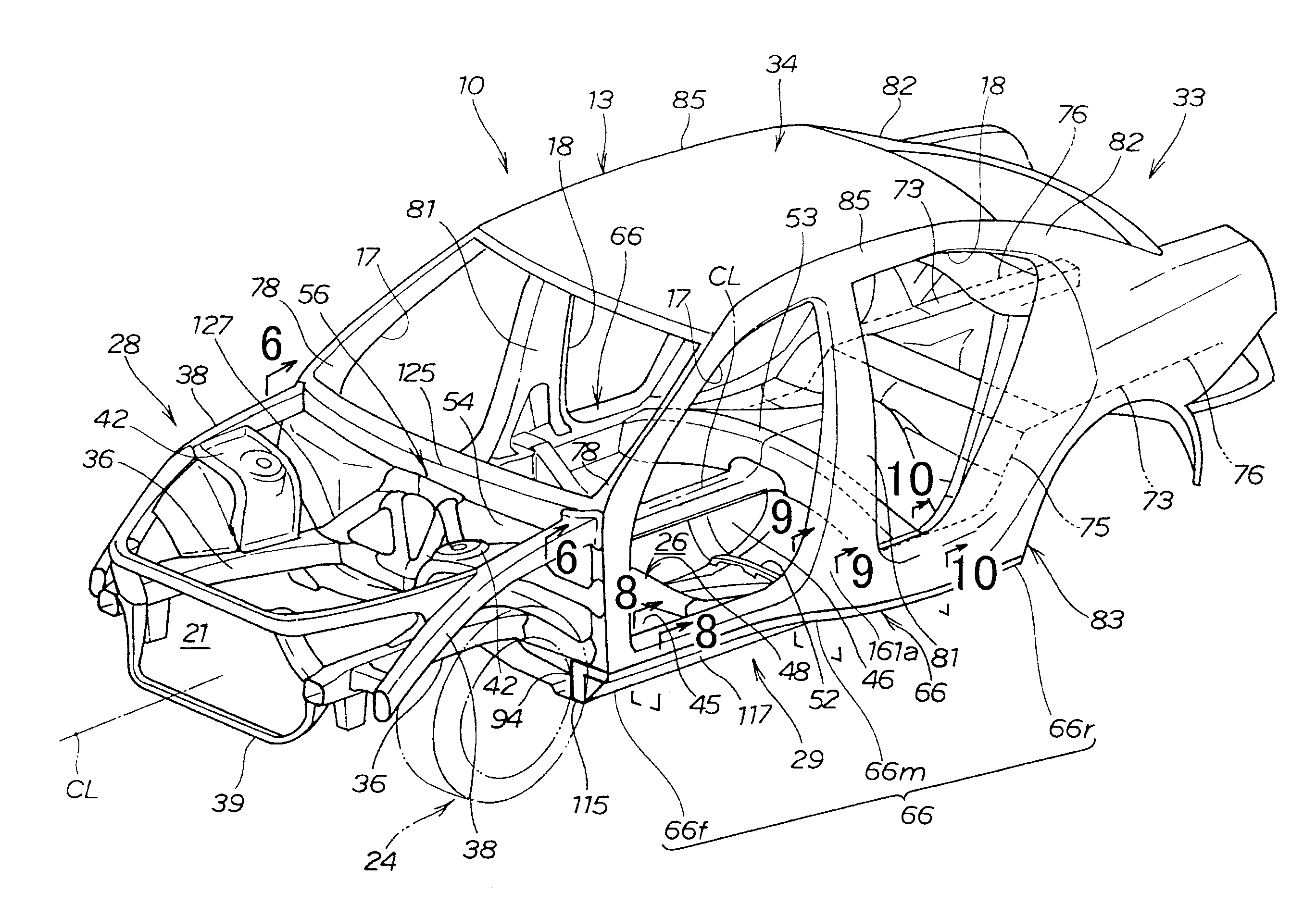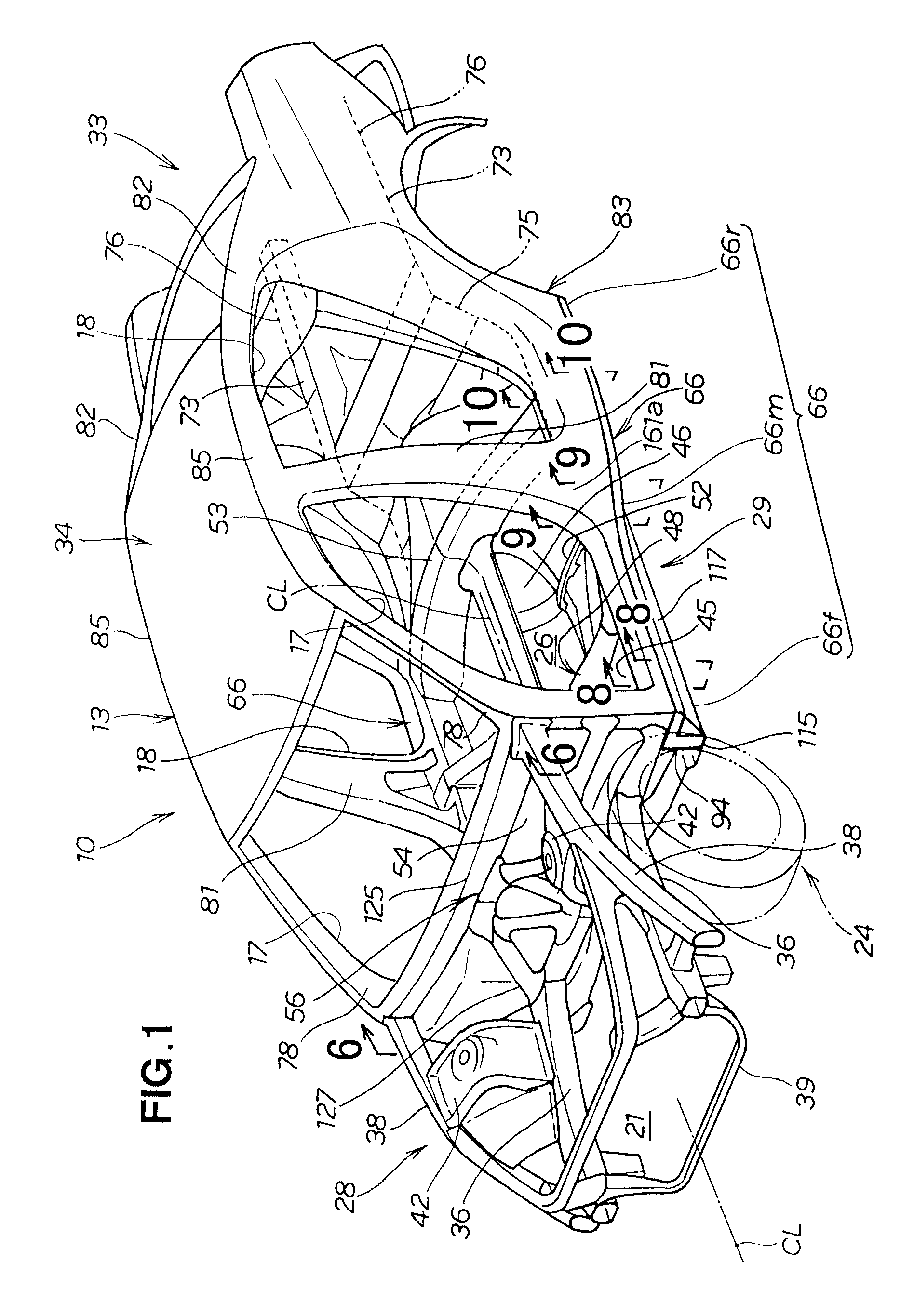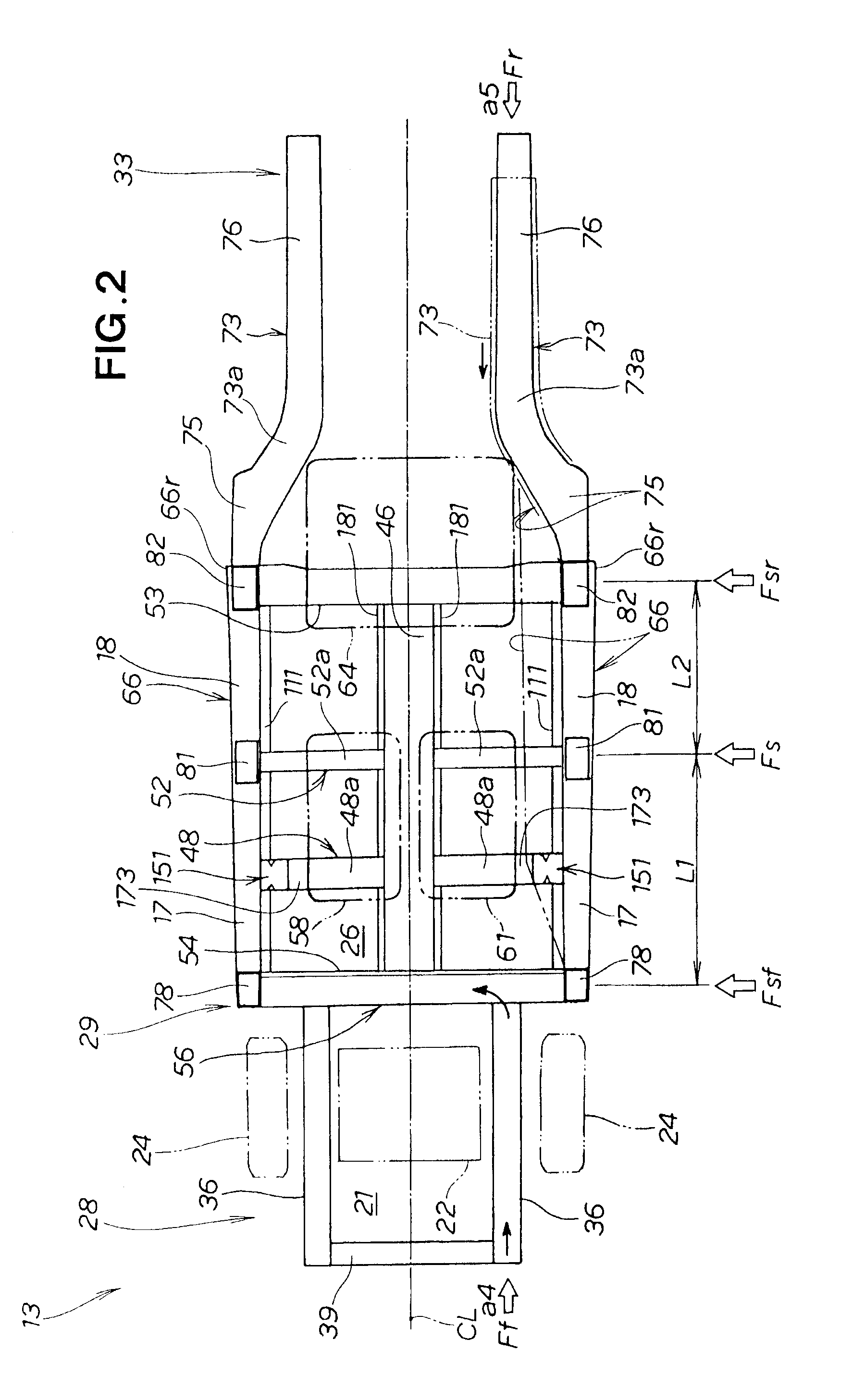Vehicle body structure
a technology for vehicles and body parts, applied in the direction of roofs, transportation and packaging, vehicle arrangements, etc., can solve the problems of front wheels having a high possibility of partially coming into contact with the front end of the side sill, and achieve the effects of less penetration, increased strength of left and right side sills, and improved passenger compartment spa
- Summary
- Abstract
- Description
- Claims
- Application Information
AI Technical Summary
Benefits of technology
Problems solved by technology
Method used
Image
Examples
Embodiment Construction
[0036]A vehicle 10 is a four-door type passenger vehicle as shown in FIGS. 1, 2, and 3, wherein a front engine compartment 21 and a passenger compartment 26 located directly behind the engine compartment 21 are formed inside a vehicle body 13.
[0037]The vehicle body 13 is of a monocoque construction, and is formed into a bilaterally symmetrical shape about a vehicle width center line CL extending in the vehicle longitudinal direction through the widthwise center of the vehicle 10. The vehicle body 13 has front door openings 17, 17 and rear door openings 18, 18 in the left and right side surfaces. The front and rear door openings 17, 18 are opened and closed by doors (not shown). A power unit 22 is disposed in the engine compartment 21. The power unit 22 is composed of an engine and a transmission. Left and right front wheels 24, 24 are suspended on the left and right sides of a front part 28 of the vehicle body 13.
[0038]The front part 28 of the vehicle body 13 is a portion where the ...
PUM
 Login to View More
Login to View More Abstract
Description
Claims
Application Information
 Login to View More
Login to View More - R&D
- Intellectual Property
- Life Sciences
- Materials
- Tech Scout
- Unparalleled Data Quality
- Higher Quality Content
- 60% Fewer Hallucinations
Browse by: Latest US Patents, China's latest patents, Technical Efficacy Thesaurus, Application Domain, Technology Topic, Popular Technical Reports.
© 2025 PatSnap. All rights reserved.Legal|Privacy policy|Modern Slavery Act Transparency Statement|Sitemap|About US| Contact US: help@patsnap.com



